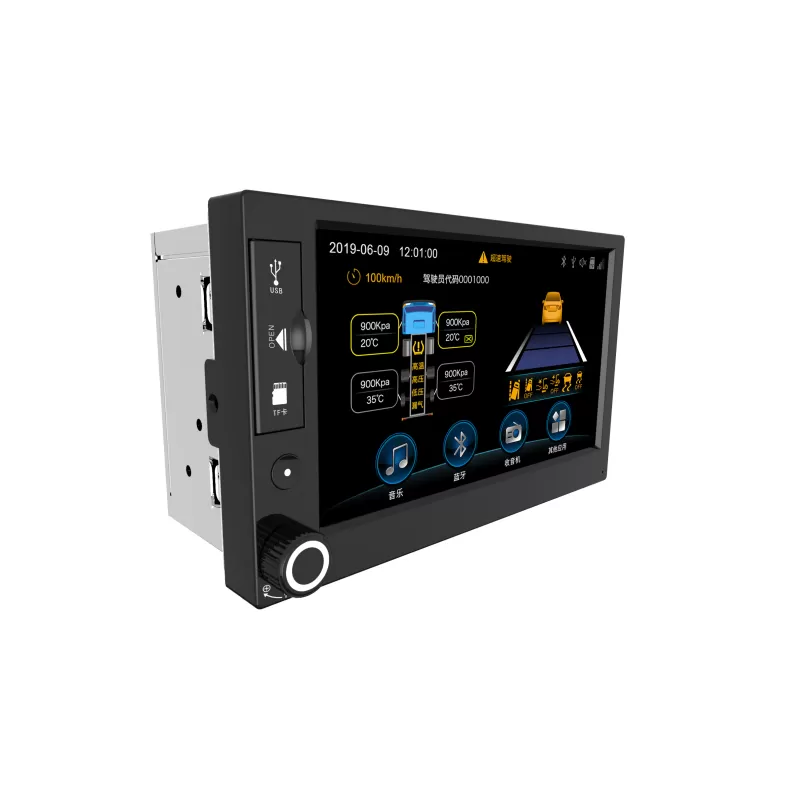In-vehicle infotainment (IVI) systems have evolved into essential, integrated platforms in modern vehicles, merging entertainment, navigation, connectivity, and safety features into one interface. Here’s an overview of the key aspects of IVI systems:
Definition and Scope of IVI Systems
IVI systems serve as the digital cockpit, centralizing multimedia, navigation, and connectivity features to enhance the driver and passenger experience. They support various media formats, integrate with navigation systems, offer internet connectivity, and use voice control to make driving more convenient and enjoyable.

Core Features of IVI Systems
Media Playback: Modern IVI systems go beyond the traditional car radio, offering CD, radio, USB, Bluetooth, and streaming capabilities. Advanced audio controls like surround sound and HD audio formats can transform the vehicle into a high-quality audio experience.
Navigation and GPS: IVI systems now incorporate advanced navigation features such as real-time traffic updates, route optimization, and GPS-based accuracy for turn-by-turn directions, helping drivers navigate cities or new territories effectively.
Communication and Internet Access: Connectivity is key, as IVI systems now include internet access through built-in SIMs or cellular connections. Features like voice-to-text, browsing, and even email checking can be done hands-free, with growing support for V2X (Vehicle-to-Everything) communication enhancing safety and traffic management.
Voice Recognition and Control: Voice command capabilities allow drivers to interact with IVI features hands-free, improving safety and usability. Modern systems use natural language processing (NLP) for seamless, conversational commands, enhancing ease of use and minimizing driver distraction.
Evolution of IVI Systems
- From Car Radios to Connected Systems: Originally, IVI systems were simple car radios for basic audio entertainment. Over time, they’ve expanded to include a broad array of features, turning vehicles into connected, multifunctional spaces.
- Integration with Mobile Devices: Smartphones and tablets have significantly influenced IVI design. Early integrations included basic audio streaming via Bluetooth, but now systems like Apple CarPlay and Android Auto provide seamless integration, allowing apps and features to be used safely on the car’s main display.
- Touchscreens and Multi-Modal Interfaces: As touchscreens replace traditional knobs and buttons, IVI interfaces are more dynamic and interactive. Multi-modal inputs (voice, gesture, haptic feedback) accommodate driver preferences and improve accessibility.

User Interface (UI) and User Experience (UX) Design
- Usability and Accessibility: IVI systems emphasize ease of use, employing larger icons and intuitive layouts for simpler navigation. Voice prompts and clear icons improve accessibility, especially for users with physical challenges.
- Ergonomic Design: IVI systems incorporate ergonomic principles, ensuring essential controls are reachable and intuitive. Feedback mechanisms (chimes, haptics) allow users to interact without taking their eyes off the road, which enhances safety.
- Reducing Driver Distraction: By minimizing the steps needed to access essential features, IVI systems reduce cognitive load. Additionally, some functions are restricted while driving to ensure the driver’s focus remains on the road.
Integration with Other Vehicle Systems
- Interaction with ADAS and Safety Features: Integration with Advanced Driver Assistance Systems (ADAS) allows IVI systems to provide safety alerts, like lane departure and collision warnings, directly on the IVI display. This collaboration enhances situational awareness and safety.
- Enhanced Navigation and Traffic Management: Adaptive cruise control and real-time traffic data from ADAS can work with the IVI system to optimize routes, adjust speeds, and improve driving efficiency based on real-world conditions.
Differentiating Infotainment and Telematics Systems
While IVI systems focus on entertainment and navigation, telematics systems emphasize data-driven, two-way communication for vehicle diagnostics, remote monitoring, and emergency alerts. Some car manufacturers offer a combination of both, but each has unique roles in the connected vehicle ecosystem.
Conclusion
IVI systems are transforming driving experiences by providing an all-in-one platform for entertainment, connectivity, and safety. With continuous advancements, including potential integrations with AI-powered assistants and augmented reality, future IVI systems promise to further enhance travel by making it more intuitive, engaging, and safer for everyone inside the vehicle.
Ready to elevate your fleet’s efficiency and security with cutting-edge IoT solutions? Discover how HBOIOT’s advanced GPS tracking systems and data-driven technology can transform your operations. Contact us today to learn more about our customizable and cost-effective solutions designed to meet your unique needs!
